Every NetSuite environment has its quirks. But if it feels like you’re constantly explaining issues instead of solving them, there’s a good chance the problem isn’t NetSuite—it’s your optimization provider.
The signs usually don’t hit all at once. They creep in.
First, a “quick fix” takes three weeks.
Then, different consultants keep picking up the same ticket.
Next thing you know, you’re burning hours on vague answers, watching your backlog balloon, and wondering why basic reports still don’t run right.
Here’s the hard truth: a good provider makes NetSuite feel like an asset. A bad one turns it into a slow, expensive guessing game. And many companies don’t realize it’s happening until renewal time when costs spike and the same problems are still sitting on the table.
If any of this sounds familiar, keep reading.
We’re breaking down eight unmistakable signs your NetSuite Optimization Services provider isn’t pulling their weight, and what top partners do differently to keep performance sharp.
What Happens When Your Optimization Provider Stops Evolving?
Optimization gaps rarely explode overnight. They creep in quietly, somewhere between “things are running fine” and “why is everything suddenly taking twice as long?”
At first, you barely notice them. A report takes a little longer to build. A customization needs tweaking. A workflow that worked six months ago starts throwing errors.
But over time, those small cracks turn into delivery headaches. And the provider you once trusted to keep things sharp starts to feel… stuck.
Here’s what’s usually happening behind the curtain:
- Same team, same playbook. They keep applying the same fixes without revisiting earlier decisions as your business evolves.
- Reactive instead of strategic. Tickets get solved, but root problems stay untouched.
- Turnover with no knowledge transfer. Every new consultant spends hours relearning your setup.
- Patches over progress. Quick fixes win out over sustainable solutions.
- Context gets lost. The “why” behind your processes fades, and solutions stop fitting as well as they used to.
This isn’t negligence. It’s what happens when a support model flatlines instead of growing with you.
Spotting this early is the difference between a system that scales—and one that slowly drags you down.
8 Signs Your NetSuite Optimization Provider Isn’t Working
Not all provider problems show up as big blow-ups. More often, it’s the small, consistent patterns that tell you your optimization partner has hit their ceiling.
If you’re seeing any of these signs, it’s a red flag that it’s time to rethink the relationship.
1. Every fix feels like a ticket, not a solution
You’re stuck in a loop of logging the same issues—slow reports, broken searches, delayed scripts—and getting temporary band-aids back. Instead of asking why this keeps happening, they just close tickets and move on.
- Teams have reported the same search being “fixed” three different times without any real performance gain.
- Pick-ticket customizations promised in a week balloon into eight-week slogs.
- Root causes stay buried while surface-level tweaks eat up billable hours.
See how leading partners tackle root problems, not just tickets, in 5 Proven NetSuite Optimization Models to Maximize ERP ROI.
2. You’re spoon-feeding their consultants
Instead of parachuting in with expertise, some providers expect you to teach them how your instance works. Admins and delivery leads end up sending long screenshots, drafting step-by-step guides, and rewriting specs just to get a basic change done.
One delivery manager put it bluntly: “If I have to spend this much time explaining what’s wrong, I might as well just fix it myself.”
3. Turnover means starting from zero
When a new consultant joins, the knowledge reset is brutal.
You lose weeks to re-explaining problems you’ve already solved. There’s no real handover, no structured documentation—just you footing the bill for their onboarding curve.
- One firm shared that after 15 hours with one consultant, they were reassigned to another with zero pass-over notes. Everything restarted from scratch.
- Another said their consultants “rotate faster than our backlog clears.”
Learn how strong support services prevent costly knowledge resets in NetSuite Support Services: Comprehensive Solutions Beyond Basic Technical Support.
4. Simple requests take weeks (or months)
When basic tweaks get stuck in endless hand-offs, it’s not because the task is complex—it’s because the provider’s internal machine is.
Saved search optimizations shouldn’t take multiple sprints. Workflow adjustments shouldn’t drag on for months.
A US-based partner shared that their provider took 31 billable hours over 8 weeks to resolve one to-do list item.
The kicker? They still didn’t find the root cause.
5. They keep blaming your requirements
There’s a difference between helping you clarify a vague request and throwing the scope back in your face every time.
Many teams get stuck with consultants who act more like order takers than advisors: “You need to define it better,” instead of “Here’s a better way to frame the problem.”
This happens most often when providers staff junior resources who can follow instructions but not lead a conversation about business context.
6. You’re paying premium rates for junior talent
Some providers promise top-tier expertise, then quietly staff less experienced resources behind the scenes. You end up paying senior rates for work that takes twice as long as it should.
- One partner was shocked to find basic workflow tweaks taking triple the estimated time, with no senior oversight.
- Another realized their “dedicated consultant” was actually rotating between three different clients.
Before renewing any contract, ask these 6 NetSuite Optimization Questions to avoid premium rates for junior work.
7. There’s no strategic roadmap—just a to-do list
You can tell when a provider has shifted from partner to ticket queue: no proactive insights, no “here’s what’s coming,” no trend analysis. It’s just a list of requests, a calendar, and a pile of invoices.
A CFO put it best: “They fix what we ask for, but they’ve stopped telling us what’s worth fixing.”
8. Costs keep climbing, but results stay flat
This is the clearest sign of them all. Renewals roll around. Rates go up. But response times don’t improve, backlogs don’t shrink, and strategic value is nowhere to be found.
- One mid-market firm was quoted $56,000 for 240 hours for the same team they’d spent the past year training.
- Another realized they could hire full-time offshore NetSuite talent for the same price as their ACS Optimize contract.
A true optimization partner offers more than a ticket queue. See 5 Service Levels Most Providers Don’t Offer.
Why These Gaps Appear in the First Place
No one wakes up one day and decides, “Let’s stick with a mediocre optimization provider.”
It happens slowly, almost invisibly, between the moment you go live and the moment you realize your system has quietly outgrown the support holding it together.
At first, everything feels fine. The system is running. Tickets get answered. No alarms are ringing.
But over time, the cracks start to show. And if you’re not looking closely? They can turn into full-blown delivery slowdowns before anyone admits there’s a problem.
Here’s how it usually plays out:
- Post-go-live complacency creeps in. Everyone’s just happy it’s “working,” so optimization gets bumped down the priority list.
- Support models don’t keep up. What sounded like premium support turns into a ticket treadmill that treats every issue in isolation.
- Small issues pile up. A saved search here, a script there—individually harmless, collectively a drag on velocity.
- Internal teams pick up the slack. Instead of driving new initiatives, your best people are stuck patching things up.
- Provider drift goes unnoticed. Because it happens gradually, the misalignment doesn’t set off alarms… until it does.
These gaps aren’t about one big failure. They’re the result of a support model that stands still while your business keeps moving.
And by the time you notice, you’ve already lost time, momentum, and senior hours you didn’t plan to spend.
What to Look For In a True NetSuite Optimization Partner
Spotting the warning signs is one thing. Knowing what “good” actually looks like is another. The best NetSuite optimization partners don’t just close tickets — they keep your system evolving in lockstep with your business. If you’re evaluating new providers (or quietly wondering whether to make a switch), here’s what separates the reliable from the replaceable:
- Senior-led delivery, not junior churn. You should be working with consultants who’ve solved problems like yours before, not learning on your dime. Ask who’s actually doing the work, not just who’s on the proposal.
- Strategic lens, not just break-fix. Strong partners think beyond the immediate task. They surface root causes, make recommendations, and help you plan the next move instead of waiting for you to hand them the next ticket.
- Consistency over musical chairs. You shouldn’t have to re-explain your setup every three months. Look for teams that document, transfer knowledge properly, and keep senior consultants engaged for the long haul.
- Elastic capacity, not rigid plans. Your support needs will fluctuate. A solid partner scales up or down with you without locking you into rigid hours or forcing expensive new SOWs for every tweak.
- Proven track record with businesses like yours. Talk to other delivery leads, CFOs, or admins they’ve worked with. Strong partners don’t just say they can optimize—they’ve done it repeatedly for teams with similar complexity.
If these qualities are missing from your current setup, see 6 Reasons to Switch from Your Current Provider.
Switching providers doesn’t have to be a huge risk.
If anything, this is where picking the right optimization partner pays compounding dividends: more velocity, cleaner systems, and fewer late-night “why isn’t this working” moments.
Stop Settling For “Good Enough” Optimization
Optimization gaps don’t shout… they whisper. A few delays here, a few workarounds there, and before you know it, your system is quietly working against you instead of for you.
The difference between teams that scale smoothly and those that stall isn’t the software. It’s the partner standing behind it.
The right NetSuite optimization partner doesn’t just keep the lights on. They help your business run sharper, faster, and smarter every quarter.
If any of those eight signs felt uncomfortably familiar, it’s probably time to take a closer look at who’s actually steering your optimization.
Because staying with the wrong provider isn’t neutral. It’s expensive.
Book a call with Stockton10 today and see what real NetSuite optimization should look like.














